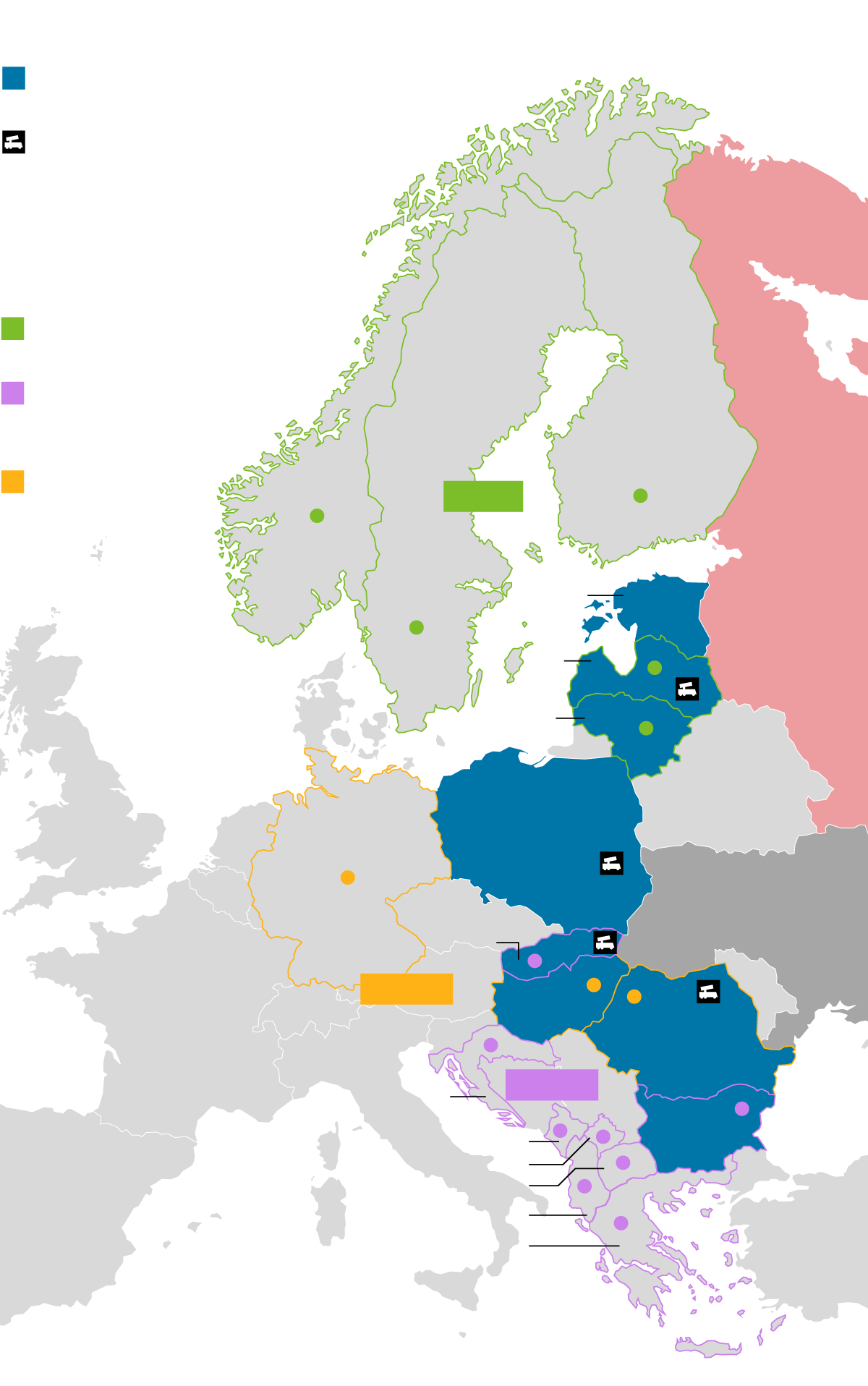Brussels supports a drone wall to protect the EU's eastern flank
Recent airspace violations by Poland and Romania have prompted the Commission to fund projects in Lithuania and Estonia.

BerlinBrussels supports the Baltic countries' initiative to build a "drone wall" to protect the European Union's (EU) eastern border, following recent Russian incursions. in Polish airspace and Romania have set off alarm bells in European capitals over the growing threat from Moscow. "The eastern flank of Europe protects all of Europe. From the Baltic Sea to the Black Sea. That's why we have to invest to support its surveillance," said European Commission President Ursula von der Leyen last week. in his State of the Union addressVon der Leyen urged Strasbourg to "respond to the call of the Baltic friends and build this drone wall", after 19 Russians will rape on September 10, Polish airspace.
It was not the first time drones had been detected in neighboring countries during Russia's large-scale war against Ukraine. Similar incidents have occurred in Romania, Estonia, Latvia, and Lithuania, but this was the first time Russian flying devices had penetrated so deeply into Polish airspace. It was also the first time Poland and its NATO allies had used force to preemptively neutralize some.
The latest such incident on record took place on Saturday, when the Romanian air force intercepted a drone that had entered its airspace during a Russian attack on Ukrainian infrastructure near the border in the Danube region.
European Commissioner for Defence and Space Andrius Kubilius urged Lithuania and its neighboring countries in July to build a regional "drone wall" and prepare for mass production of unmanned aerial systems, after a Russian-made drone entered Lithuanian territory from Belarus.
In May 2023, Agne Bilotaite, then Lithuania's interior minister, proposed building a "drone wall" along the Russian and Belarusian borders as part of a broader effort to improve border surveillance and defense. Bilotaite noted at the time that the entire region faces similar coordinated threats from Russia and Belarus, from the instrumentalization of migration even cyberattacks, through disinformation campaigns, sabotage of critical infrastructure, and other hybrid threats.
A year later, the Baltic countries, Poland, Norway, and Finland agreed to develop this drone wall to detect, track, and neutralize drones. This initiative aims to prevent smuggling and provocations by hostile states through the use of unmanned aerial vehicles (UAVs), counter-drone systems, and real-time data sharing between agencies.
A very real threat
However, until the recent incidents involving Russian drones, the project had not found support from Von der Leyen. Last March, Lithuania and Estonia were denied EU funding for this project aimed at better border protection. Finally, Brussels has opened its eyes, revealing a weak point on the eastern flank of the European Union and NATO. The increasingly frequent incidents demonstrate that the possibility of a Russian or Belarusian drone entering EU territory is real.
In response to Moscow's provocations, NATO Secretary General Mark Rutte announced the launch of the initiative on Friday. Eastern Sentinel to reinforce and guarantee the security and protection of the eastern flank of the Atlantic Alliance. The new NATO initiative, in which Spain will participate, follows the model of Baltic Sentinel, an operation launched at the beginning of the year in the Baltic Sea to prevent any attack on submarine infrastructure in that area, reinforce the military presence of the Atlantic Alliance and improve the capacity of the allies to respond to destabilizing acts.
Regarding the drone wall, NATO believes that there are several lessons that can be learned from Ukraine, which already has a lot of experience with drone interceptors. "The Baltic countries are investing in technologies and learning from Ukraine what types of sensors and what types of weapons, kinetic and non-kinetic, could be effective," General Alexus Grynkewich, Supreme Commander of the allied forces in Europe, recalled last Friday.
In response to the full-scale Russian invasion of Ukraine, NATO already strengthened its deterrence and defense capabilities in 2022 and increased its military presence in eight countries on its eastern flank: Estonia, Latvia, Lithuania, Poland, Slovakia, Hungary, Romania, and Bulgaria.
Poland launched its Eastern Shield program in 2024, a large-scale defense infrastructure project, co-financed by the European Union, to protect its border with Russia and Belarus and increase military capabilities in the event of war.
And in 2025, the DEFENDER Europe program was implemented with the participation of 25,000 soldiers from 29 allied countries, deployed in 18 states in eastern and central Europe, where they received training from the United States with the aim of testing the speed of defending the eastern flank by NATO partners.



